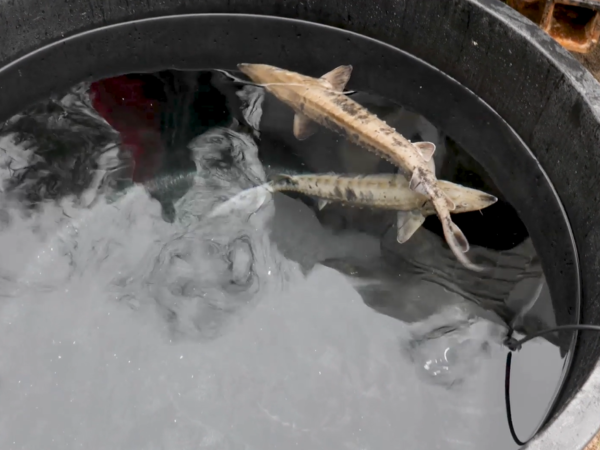
By Lester Graham, Michigan Radio
The Great Lakes News Collaborative includes Bridge Michigan; Circle of Blue; Great Lakes Now at Detroit Public Television; and Michigan Radio, Michigan’s NPR News Leader; who work together to bring audiences news and information about the impact of climate change, pollution, and aging infrastructure on the Great Lakes and drinking water. This independent journalism is supported by the Charles Stewart Mott Foundation. Find all the work HERE.
Three environmental groups plan to sue the U.S. Fish and Wildlife Service in an effort to protect a small snake found in parts of Michigan. The Center for Biological Diversity formally notified the agency it will sue because it denied the Kirtland’s snake protection under the Endangered Species Act.
The Kirtland’s snake is small, has a red belly, and lives in wetland areas, mostly underground in crayfish burrows.
“With the disappearance of its habitat under agriculture, under the plow or under pavement, that the Kirtland’s snake has disappeared from many areas where it once occurred,” said Noah Greenwald with the Center for Biological Diversity.
That group was joined by the Hoosier Environmental Council, and the Prairie Rivers Network in formally notifying the Fish and Wildlife Service of its intent to file a lawsuit.
In some cases, just the notice is enough to get the agency to review a decision.
The snake has disappeared from Wisconsin and Pennsylvania. It still survives in counties in the southern half of Michigan’s Lower Peninsula as well as in Illinois, Indiana, Kentucky, Missouri, Ohio, and Tennessee. In those states the Kirtland’s snake is found in about half as many counties as it once was.
It was proposed to be protected under the Endangered Species Act in 2010. In 2017, the Trump administration denied the protection.
After Joe Biden became president, the environmental groups requested a review of many of the decisions to deny protection to species.
“But we just haven’t seen action by the Biden administration to review species that were denied protection, so we feel like we have to take it to court,” Greenwald said.
Protecting the Kirtland’s snake would primarily come in the form of better monitoring of the snake’s populations and stronger protections for wetlands.
Catch more news at Great Lakes Now:
Environmental group says Gov. Whitmer’s plan to reduce harmful algal blooms ‘won’t work’
Proposed eastern sandhill cranes hunt in breeding states stirs controversy
Featured image: The loss of wetlands affects many species. The small Kirtland’s snake is now found in about half as many counties as it once was. (Photo Credit: Lester Graham/Michigan Radio)
2 Comments
-
They should protect these animals. We don’t have any idea if we will be able to see these animals in a decades from now due to climate changes.
-
Just found one in my driveway tonight. It was a pretty warm day & a lot of insects seemed to swarm the air tonight, more than average I guess. Anyhow, I took a couple pictures & tried to go back & see if he was still around and he snaked his way back into the grass.
-




